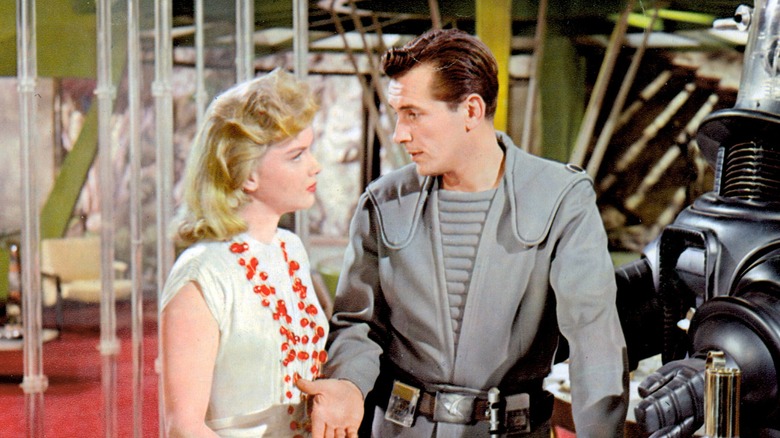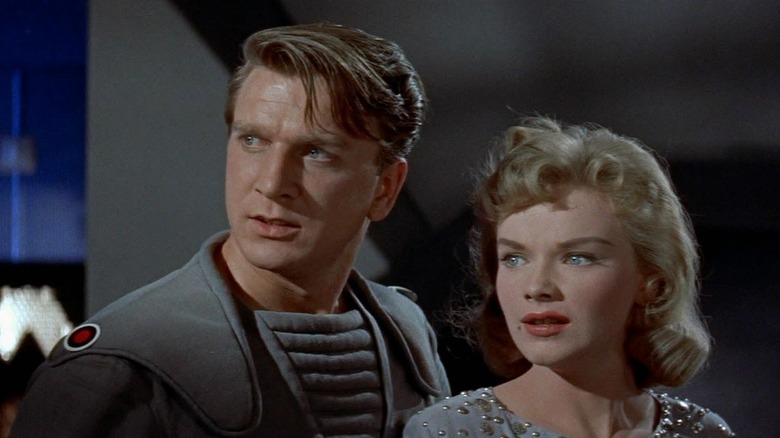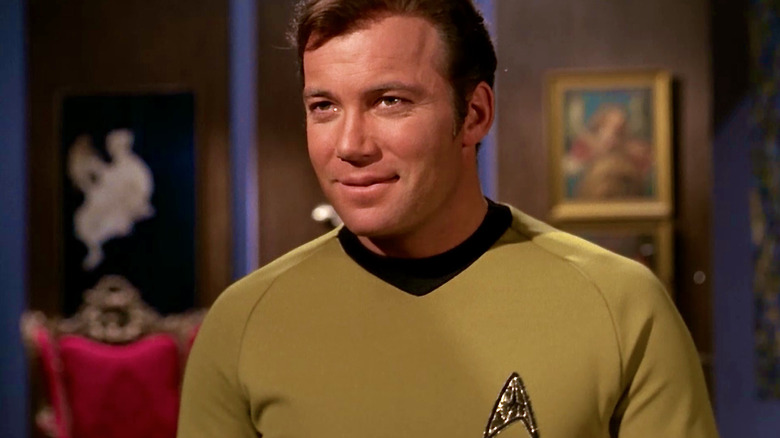Leslie Nielsen Might Have Been The World's Very First Star Trek Fan
Celebrities who self-proclaim to be Trekkies are common enough, but actually hearing a famous person lose their cool over a particular episode or character from "Star Trek" creates a strange unspoken kinship with fellow fans. Trekkies are happy to find one another, even during late-stage geek culture where mutual pop culture passion is now a common part of social discourse.
Ben Stiller famously named his production company Red Hour Films after the "Star Trek" episode "The Return of the Archons" (February 9, 1967). That episode features a planet that regularly engages in a destructive "festival" — very similar to "The Purge" — that they call the Red Hour. On "The Graham Norton Show," Tom Hanks declared that his family used to go wild for Trek when he was a boy. Rosario Dawson once talked to Conan O'Brien in Klingon. Even President Obama revealed his love for "Star Trek" at a memorial for Leonard Nimoy. Some celebrities were so vocal about their love that they were asked to appear on the show. Mick Fleetwood, Jason Alexander, Stephen Hawking, and Whoopi Goldberg were all eventually cast in "Star Trek" projects.
Celebrity Trekkies, however, appear to go back to the very dawn of the show. The very first episode of "Star Trek" that aired in the United States was "The Man Trap," the episode with the mind-clouding salt vampire, or M-113 Creature to Trekkies. It aired prior to the CBS primetime line-up on September 8, 1966. In a 2016 interview with the Associated Press, longtime Trek writer D.C. Fontana remembered the very first days of broadcast and how she — then a production secretary — happened to be standing by the phone at 9:00 a.m. on September 9.
Leslie Nielsen was calling.
A grandfather of Trek
Fontana admits to being a little starstruck. Nielsen was well-known to sci-fi fans for his appearance in Fred M. Wilcox's 1956 film "Forbidden Planet," a widely celebrated futuristic rendition of Shakespeare's "The Tempest." In the film, Nielsen plays the stern starship commander J.J. Adams, a serious and aloof captain of a crew of feisty employees. In 1966, Nielsen was not yet known as a comedian, a career shift that wouldn't begin in earnest until his appearance in 1980s' "Airplane!" So Nielsen's words, to Fontana's ear, were earnest and flattering. As she recalled the encounter:
"I was in the office at 9 o'clock as usual, and the phone rang. [Gene] Roddenberry wasn't in yet, so I picked up and answered 'Star Trek.' This very familiar voice on the other end said, 'Hello, this is Leslie Nielsen.' [...] He said, 'I saw the show last night and I thought it was wonderful and had a great future,' [...] I'm paraphrasing him a bit, but he was very effusive about the show ... I was thrilled to death, because I loved 'Forbidden Planet.' For him to call and say he really liked the show — what a huge compliment."
Sci-fi scholars may point to J.J. Adams as one of the many inspirations for the character of Captain Kirk, played by William Shatner. Additionally, the general military-like command structure seen on the U.S.S. Enterprise as an extension of the power dynamics seen in "Forbidden Planet." Fontana wasn't just talking to a celebrity. She was, in a sense, talking to one of the grandfathers of "Star Trek."
Nielsen ratings vs. Nielsen's ratings
Fontana also pointed out that "Star Trek," from the very start, had a very passionate fan base. They literally received sacks and sacks of letters from passionate viewers. To her recollection:
"The first week, we got a bag of mail. The second week, we got three bags of mail. After that, we got tons of mail, which we couldn't handle. There was no time for us to deal with any of it. So an answering service had to take over.
There was, however, a disconnect between the volume of letters and the volume of viewers. Not a lot of people were tuning in, but those who did wrote in letters. As Brian Eno once said of the 1967 albums "The Velvet Underground & Nico," hardly anyone bought it, but everyone who did started a band. Throughout its three-year run, "Star Trek" was rarely a ratings bonanza, attracting a tiny, enthused cult audience.
Thanks to the gods of syndication, "Star Trek" was put regularly onto the network's rerun schedule, and for an entire decade, new fans could find old episodes of the show to appreciate afresh. It was during the 1970s that "Star Trek" conventions first began, and that series creator Gene Roddenberry began giving speaking engagements as to what "Star Trek" really meant at its core. During these backs-and-forths with fans, notions of "Star Trek" as a diplomatic utopia began to solidify in the minds of both viewers and creator. In 1987, Roddenberry created "Star Trek: The Next Generation." The rest is history.


